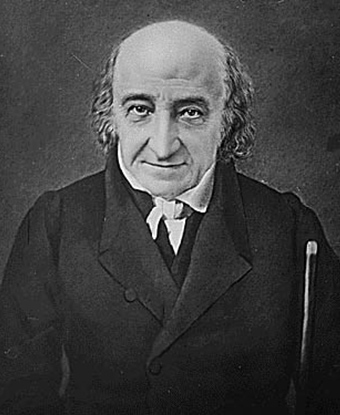Last updated: January 2, 2025
Person
Albert Gallatin

Albert Gallatin was born in Geneva, Switzerland of an aristocratic family whose wealth allowed him to attend the elite Academy of Geneva. There, he studied an eclectic curriculum of philosophy, languages, mathematics, and science. These diverse interests would help to distinguish Gallatin both as a financier and as a humanitarian.
Gallatin arrived in the United States in 1780, seeking adventure and fortune as a tea merchant. He ended up along the western frontier of Pennsylvania and Virginia as a land surveyor, falling in love with the rugged, bucolic land and establishing a home. He did not remain in the west for long; the newly forming government drew him eastward to Philadelphia in 1790 to help form the constitution of Pennsylvania.
Gallatin moved into national politics in 1793, serving as Senator of Pennsylvania, and then was elected to the House of Representatives three times. He used these political opportunities as a platform to fight for public education, land acquisition, and the abolition of slavery, as well as to establish the Ways and Means congressional committee overseeing a system of American taxation. This financial expertise became Gallatin’s political legacy. He served as Secretary of the Treasury from 1801 to 1814, with a primary focus on reducing the national debt associated with the $15 million acquisition of the Louisiana territory in 1803.
Another major fiscal challenge he faced in his position as Secretary of the Treasury was concerns over the nation’s fiscal stability due to the War of 1812. The nation was in no shape financially to fight a war. Gallatin realized this, and immediately began negotiating for peace. As early as 1813, Gallatin along with John Quincy Adams, Henry Clay, and other American diplomats, met with British officials in Ghent, Belgium to negotiate peace. Although it would take a full year to navigate the finer points of the peace treaty, the representatives were able to find a peaceful agreement in the waning days of 1814, and sent it to President Madison for consideration and ratification.
After the war, Gallatin continued in this role as a diplomat by being appointed Minister to France, and later as a negotiator to resolve a Canadian Boundary dispute. When he returned to the United States in 1827, he retired from government service and instead dedicated his life to his fields of study at the Academy of Geneva: he became president of a bank, helped found present-day New York University, and established the American Ethnological Society.
